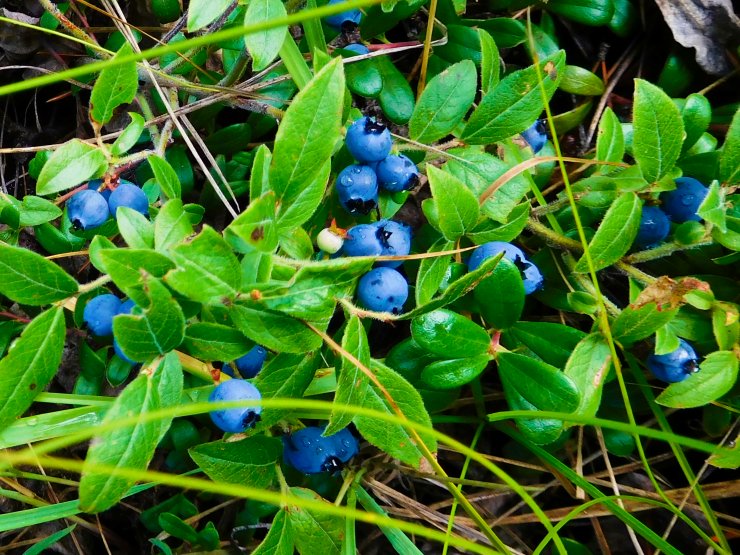
Lowbush blueberries
Lowbush blueberries are often called “wild” blueberries, because they’re harvested in the wild. You can find them growing in sandy soil near meadows or forest clearings, or near the edges of bogs. Some lowbush blueberry growers manage semi-wild patches that flourish in the acidic, sandy, well-drained soil in Maine, New Brunswick, Nova Scotia, and Quebec. Maine is the world’s leading producer of lowbush blueberries.
The plants produce berries that are far smaller than what you usually see at the market, but they are sweet as candy with an intense blueberry flavor. You’re likely to get the best taste from lowbush blueberry plants that have been harvested in the wild. Many gardeners will tell you that if you don’t already have wild blueberries naturally growing on your property, they won’t grow there. It can be done—but it requires a lot of work. If you’re up for the challenge, you can grow this variety at home—as long as you can give it the growing conditions it needs. Make sure your soil has the right composition and the right pH: well-drained soil with a pH of 4.5 to 5.2.
Lowbush blueberries are quite tolerant of cold; most varieties thrive in zones 3 to 6. They work well as a low-maintenance groundcover: they range from 6 to 24 inches in height. They usually flower in the spring, and the berries are ripe for picking in mid- to late summer.
They’ll need a little TLC to get them started. You can get seedlings from a nursery, or even wild blueberry sod—a great way to get started, but not always easy to find. You can also get plugs from a farm stand or from a lowbush farmer—with their permission, of course. Plugs are little sections of a wild plant. You can use a golf hole cutter or a bulb digger to punch out a part of the plant.
Once you’ve planted your plants or plugs, it’s time to be patient. Remove the flowers from the plants for the first two years; this will help strengthen the roots. You’ll need a special hand rake to harvest the tiny berries—they’re much smaller than the U-Pick blueberries you’re probably familiar with. After you harvest the berries, cut back the less productive growth.
Lowbush blueberries rely on insects to pollinate them. Local bees should be able to handle the job. Commercial farmers hire beekeepers to bring hives to their fields. But unless you’re planning to plant an acre of these, you should be fine. The bees will get wind of the blueberry flowers.
Commercial wild blueberry farmers divide their crop in a two-year production cycle. They alternate between a prune year and a crop year, which means they’re only ever harvesting half of their plants. The prune year starts right after harvest. Farmers cut the plants down to the ground, or burn the field. The result is a year of rest for the plants, where new stems, leaves, and buds develop. Lowbush blueberries grow by creeping, gradually spreading out underground via rhizomes—underground runners that develop into new roots and stems.
Lowbush cultivars include:
- Baby Blue
- Crouching Bear
- Hope’s Landing
- Jonathan
- Leslie
- Little Crisp
- Princess Jenny
- Ruby Carpet
- Top Hat
Have you ever grown lowbush blueberries? How successful were you with your crop? Please share in the comment section below your tips for growing lowbush blueberries.


 Previous
Previous


I planted my low bush blueberries this spring! They are still very small! I hope they make it ok.